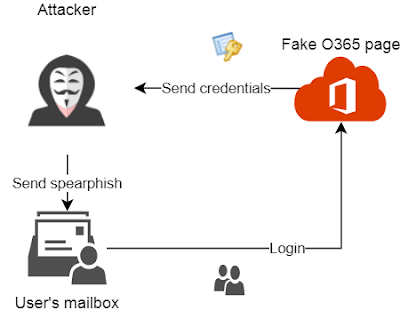Microsoft warns of new phishing techniques in 2019
The computer giant Microsoft has just published a report analyzing the main vectors of cyber attacks of the moment. For this year, the trend is towards phishing with formidable and sophisticated methods.
With the end of the year, comes the assessment of trends in cyber threats. Among the major players in cybersecurity, Microsoft has just published a vast report on the main vectors used in attacks. For the past two years, phishing has experienced the greatest increase. While the number of ransomware and crypto-mining saw their number decrease, that of phishing by email went from 0.2% in January 2018, to 0.6% last October. A figure that seems ridiculous at first glance, but which actually represents the percentage of phishing emails detected on the huge total volume of emails analyzed by Microsoft.
 |
| High-level overview of typical O365 phishing |
It is above all the phishing methods used that stand out for their level of sophistication. One of the most impressive was influencing Google's search results by channeling traffic from legitimate sites to the sites of cybercriminals. Targeted websites go up in Google results for some very specific terms. It is from this moment that cyberattackers carry out their email campaign. The post associates links with Google's search results for the term they are working on SEO. When the victim clicks on the link and the first result of Google, it is the website controlled by the hacker, then the phishing page which is displayed.
False 404 Error Pages
Another paid method is the creation of untraceable pages displaying the 404 error. This process allows cybercriminals to bypass phishing detection systems. However, as soon as the user clicks on the link, it is automatically redirected to the trap. Finally, the third threat remains more classic, but formidable in effectiveness. Instead of copying the credible elements which constitute a real site, the attackers have developed a system which comes directly to recover all the real elements of the site and displays them on the trapped page. For the victim, there is no difference between the real site and that of the scammers. Only the site URL lets you know that it is a trap.












No comments:
Post a Comment